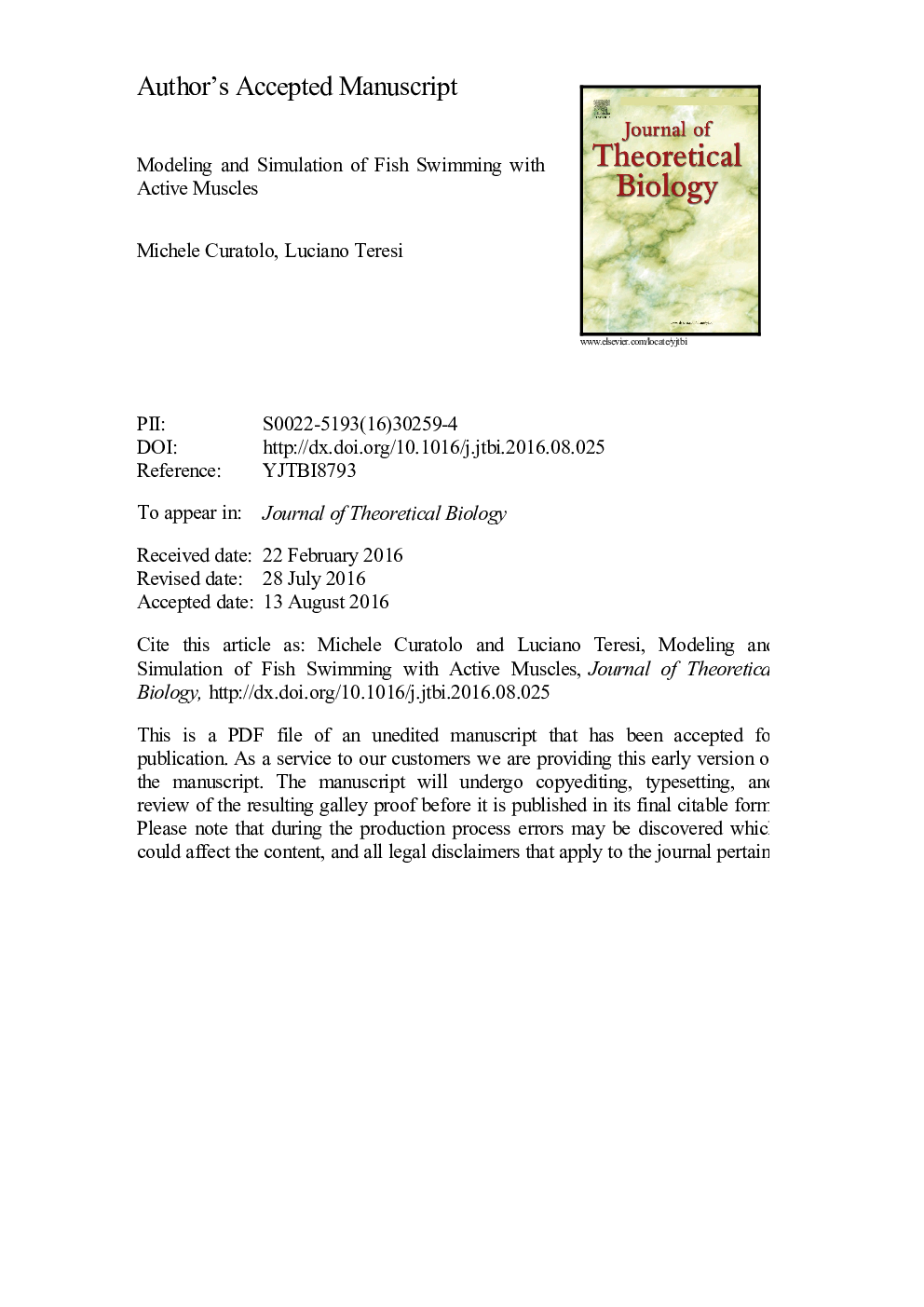| Article ID | Journal | Published Year | Pages | File Type |
|---|---|---|---|---|
| 6368861 | Journal of Theoretical Biology | 2016 | 10 Pages |
Abstract
Our goal is to reproduce the key features of carangiform swimming by modeling muscle functioning using the notion of active distortions, thus emphasizing the kinematical role of muscle, the generation of movement, rather than the dynamical one, the production of force. This approach, already proposed to model the action of muscles in different contexts, is here tested again for the problem of developing an effective and reliable framework to model and simulate swimming. A proper undulatory movement of a fish-like body is reproduced by defining a pattern of distortions, tuned in both space and time, meant to model the muscles activation which produce the flexural motion of body fish; eventually, interactions with the surrounding water yields the desired thrust. Carangiform swimmers have a relatively inflexible anterior body section and a generally flat, flexible posterior section. Because of this configuration, undulations sent rearward along the body attain a significant amplitude only in the posterior section. We compare the performances of different swimming gaits, and we are able to find some important relations between key parameters such as frequencies, wavelength, tail amplitude, and the achieved swim velocity, or the generated thrust, which summarize the swimming performance. In particular, an interesting relation is found between the Strouhal number and the wavelength of muscles activation. We highlight the muscle function during fish locomotion describing the activation of muscles and the relation between the force production and the shortening-lengthening cycle of muscle. We found a great accordance between results and empirical relations, giving an implicit validation of our models.
Keywords
Related Topics
Life Sciences
Agricultural and Biological Sciences
Agricultural and Biological Sciences (General)
Authors
Michele Curatolo, Luciano Teresi,
